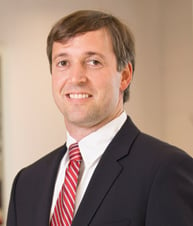
The following is a summary of the precedential patent-related opinions issued by the Court of Appeals for the Federal Circuit for the week ending February 14, 2014. David Frist and Ross Barton prepared this edition.
Case Summaries
Patent Office Procedures: Reexamination
Claim Interpretation: Intrinsic Evidence: Prosecution Disclaimer
Claim Interpretation: Extrinsic Evidence: Dictionaries and Treatises
Litigation Practice and Procedure: Procedure: Appellate Jurisdiction and Procedure
Tempo Lighting, Inc. v. Tivoli, LLC, No. 13-1140 (Fed. Cir. (PTAB) Feb. 10, 2014). Opinion by Rader, joined by Moore and Wallach.
In upholding the Patent Trial and Appeal Board’s (“Board”) claim construction of a disputed claim, the Federal Circuit concluded that the examiner erred in relying on extrinsic dictionary evidence that was inconsistent with the intrinsic evidence found in the patent’s prosecution history. The Federal Circuit also vacated the Board’s affirmance of anticipation predicated on the incorrect construction, and reversed the Board’s finding that the third-party requester waived certain invalidity arguments.
Tivoli LLC (“Tivoli”) owns U.S. Patent No. 6,554,446 (“the ’446 patent”) relating to a stair-lighting apparatus. In February 2004, Tivoli sued Tempo Lighting, Inc. (“Tempo”) for infringement. Tempo later requested inter partes reexamination. In March 2005, the examiner rejected all claims of the ’446 patent as unpatentable. Tivoli appealed this rejection to the Board. The Board rejected the examiner’s claim construction of the term “inert to light,” but then relied on the examiner’s factual findings regarding whether the prior art met the “inert to light” claim limitation in finding the claims patentable. The Board also refused to hear certain additional invalidity arguments presented by Tempo, holding that Tempo’s failure to file a third-party cross-appeal after the initial examination rejection constituted waiver of the arguments. Tempo then appealed the Board’s decision.
Affirming the Board’s claim construction, the Federal Circuit ruled that Tivoli’s amendment of the claims during prosecution constituted dispositive intrinsic evidence of what the phrase “inert to light” meant. This prosecution-based intrinsic evidence was superior to the inconsistent extrinsic dictionary evidence relied on by the examiner in her prior, erroneous construction. The Federal Circuit then vacated the Board’s conclusion that the claims were patentable because the Board improperly relied on the examiner’s discussion of prior art using the erroneous construction of “inert to light.” The Federal Circuit thus remanded for new factual findings under the proper construction.
Finally, the Federal Circuit reversed the Board’s exclusion of Tempo’s additional arguments of invalidity. Under 37 C.F.R. § 41.61(b), a third party may request a cross-appeal with respect to a final decision favorable to patentability, and the Board ruled that each time the examiner issued a finding of unpatentability relying on one argument, Tempo was obligated to file a cross-appeal or any alternative argument made before the examiner was waived. The Federal Circuit first clarified that a finding of unpatentability on any one ground does not constitute a finding of patentability on any other, and thus no obligation to appeal could have been triggered. Additionally, the Federal Circuit concluded that a cross-appeal under § 41.61(b) is permissive, not compulsory; thus, a third party need not file a request for cross-appeal in order to raise and brief an issue. The Federal Circuit further noted that, on remand, Tempo has the right to defend the examiner’s finding of unpatentability on any grounds supported in the record. The Federal Circuit thus reversed and remanded the case.
http://www.cafc.uscourts.gov/images/stories/opinions-orders/13-1140.Opinion.2-7-2014.1.PDF
__________________________________________________________________________________
Patentable Invention: Anticipation: Conception and Reduction to Practice
Solvay S.A. v. Honeywell International Inc., No. 12-1660 (Fed. Cir. (D. Del.) Feb. 12, 2014). Opinion by Dyk, joined by Rader. Dissenting opinion by Newman.
In affirming the district court’s ruling of invalidity, the Federal Circuit held that the patent-in-suit was invalid under § 102(g)(2) because the process embodied in the claims had been conceived in Russia, but had been reduced to practice in the United States at the direction of the Russian inventors before the priority date of the patent-in-suit, thereby qualifying it as prior art under § 102(g)(2).
Solvay S.A. (“Solvay”) sued Honeywell International Inc. (“Honeywell”), alleging infringement of U.S. Patent No. 6,730,817 (“the ’817 patent”), which claims a method of manufacturing non-ozone depleting hydrofluorocarbon (“HFC”) known as HFC-245fa, which is manufactured by both Solvay and Honeywell.
Before the priority date of the ’817 patent, Honeywell had entered into a joint research agreement with the Russian Scientific Center for Applied Chemistry (“RSCAC”) that authorized Honeywell to practice RSCAC’s invention in the United States. Pursuant to that agreement, RSCAC engineers working in Russia created a report documenting the development of a process for manufacturing HFC-245fa. Honeywell then used that report to run the same process in the United States before the priority date of the ’817 patent.
The district court concluded that because the invention was conceived by engineers working for RSCAC outside the United States before the priority date of the ’817 patent and reduced to practice in the United States by Honeywell personnel following the RSCAC engineers’ instructions before the priority date of the ’817 patent, Honeywell’s reduction to practice should be attributed to the Russian engineers, rendering the ’817 patent invalid under § 102(g)(2).
On appeal, Solvay argued that the district court erroneously construed a claim of the ’817 patent, and that, even under the district court’s claim construction, the facts did not establish inurement, so that Honeywell’s work should not have been attributed to the RSCAC engineers. Solvay also argued that there could be no inurement because Honeywell independently benefited from performing the RSCAC process—the Russians applied for and received a patent in Russia, while Honeywell filed a patent application in the United States.
The Federal Circuit rejected Solvay’s arguments and affirmed the district court’s judgment of invalidity, stating that Solvay improperly raised a new claim construction argument on appeal, and that inurement exists if the inventor authorizes another to reduce his invention to practice. In this case, RSCAC had authorized Honeywell to practice its invention in the United States, so the Federal Circuit determined that inurement existed, and the ’817 patent should be invalid under § 102(g)(2).
Judge Newman dissented on the basis that the majority’s opinion created a new class of “secret” prior art because, in her view, the private, secret activities of Honeywell should not constitute prior art against all others.
http://www.cafc.uscourts.gov/images/stories/opinions-orders/12-1660.Opinion.2-7-2014.1.PDF
________________________________________
Additional Notices
Alston & Bird's Federal Circuit Patent Case Summaries are intended to be informational and do not constitute legal advice or opinions regarding any specific situation. The material may also be considered advertising under certain rules of professional conduct or other law. This publication may be reprinted without the express permission of Alston & Bird as long as it is reprinted in its entirety including the copyright notice, ©2014.

